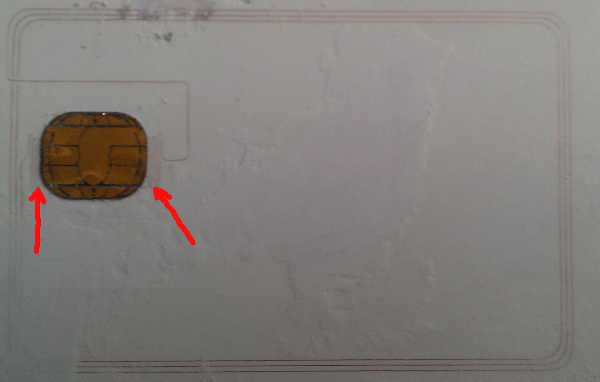I'm trying to understand how my (rfid?) travel card works. It looks like this:

I'd like to know if the two portions of wire shown at the end of the arrows are capacitors and, if it is the case, how does it/they work(s). Could it be for example charges that accumulate on the surface of the wire creating a capacitive effet?
